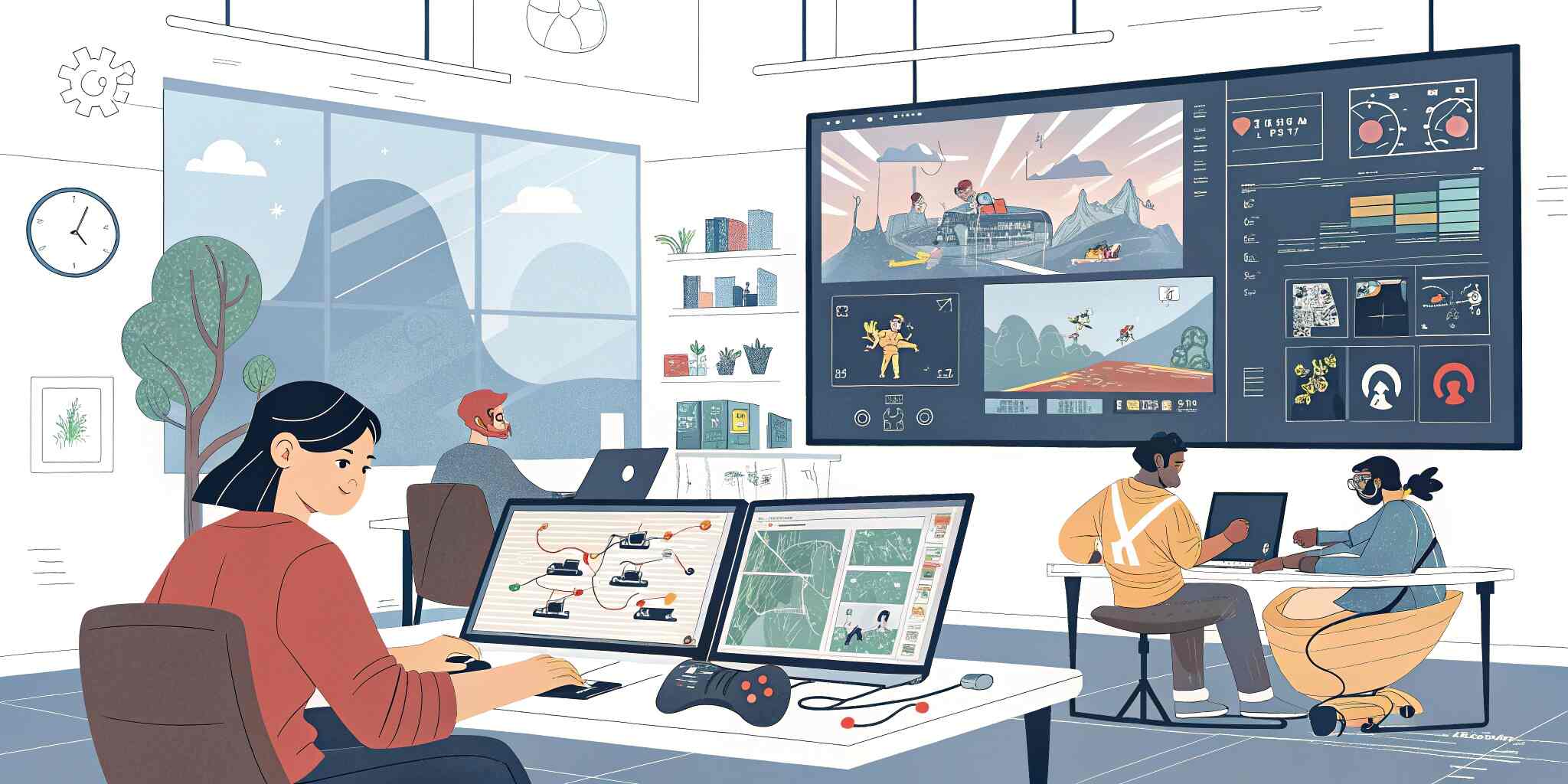The difference between a one-time play and a viral hit often comes down to one thing—the game loop. A well-crafted loop keeps players engaged, rewarded, and returning. In this post, we’ll break down what makes a game loop addictive and how to design one.
1. What Is a Game Loop?
A game loop is the repetitive cycle of player actions, game feedback, and rewards that define gameplay. The most common types:
- Core Loop: The main actions players repeat (e.g., fight, loot, upgrade).
- Compulsion Loop: Psychological reinforcements that drive continued play (e.g., leveling up, daily rewards).
Think of it as the heartbeat of your game.
2. The Anatomy of an Addictive Game Loop
To make your loop addictive, it should:
- Be easy to learn, hard to master.
- Offer instant feedback for actions.
- Use incremental rewards.
- Provide a sense of progression.
Example: In Clash of Clans:
- Action: Build and attack
- Feedback: Earn resources
- Progress: Upgrade buildings and troops
3. Start With a Strong Core Loop
The core loop is the player’s main activity. It should be:
- Simple (1-3 key actions)
- Satisfying (engaging mechanics)
- Repeatable (fun every time)
Example: In Candy Crush:
- Match tiles → Get score → Advance level
4. Add a Compulsion Loop for Retention
Compulsion loops tap into players’ emotional and psychological drives. Include:
- Variable rewards: Random loot boxes or mystery bonuses.
- Countdown timers: Encourage return to collect rewards.
- Progress meters: Show growth or mastery.
Tip: Use the Zeigarnik effect—the desire to complete unfinished tasks.
5. Layer Feedback and Progression
Immediate feedback is critical. Use:
- Visual effects
- Sounds
- Haptic feedback (vibration)
Also build:
- Short-term goals (complete a level)
- Mid-term goals (unlock a new item)
- Long-term goals (beat the game, leaderboard)
6. Use Data to Improve Your Loop
Track:
- Retention rates
- Session length
- Drop-off points
Tools: Unity Analytics, Firebase, GameAnalytics
Use this data to:
- Optimize reward timing
- Rebalance difficulty
- Improve user flow
7. Avoid Over-Monetizing
Addiction should come from fun, not frustration. Be ethical:
- Don’t gate progress behind paywalls.
- Use ads and in-app purchases sparingly and strategically.
- Respect your players' time.
Conclusion:
An addictive game loop is the foundation of any successful game. By combining engaging mechanics, satisfying feedback, and psychological hooks, you create an experience that players want to return to again and again. Start with your core loop, layer in compulsion, and always design with the player in mind.


